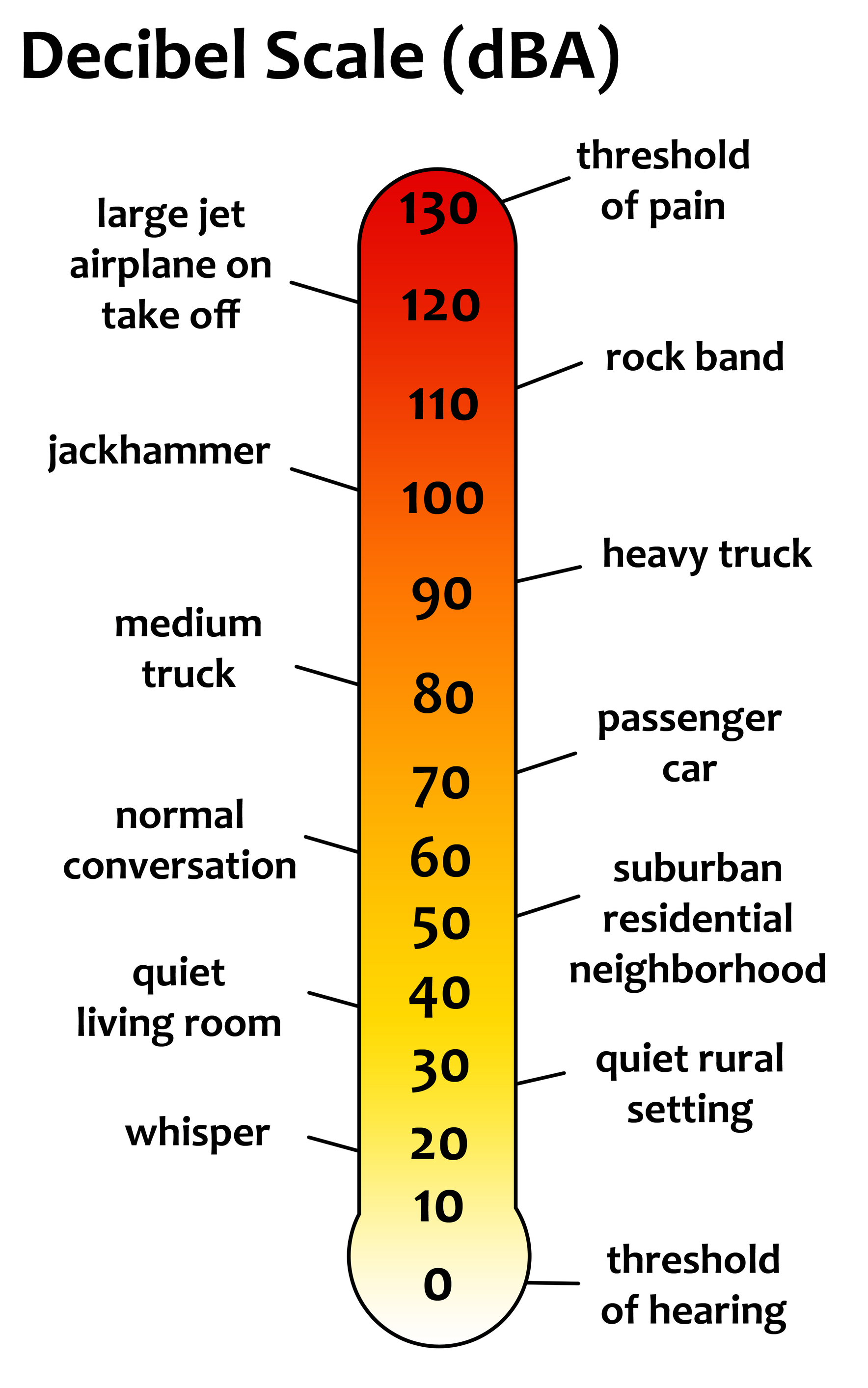

Environmental Protection Agency (EPA) and the World Health Organization (WHO) recommend maintaining environmental noises below 70 dBA over 24-hours (75 dBA over 8-hours) to prevent noise-induced hearing loss. Some of these apps can predict your maximum allowable daily noise dose, like the NIOSH SLM app developed for iOS devices to help promote better hearing health and prevention efforts.
#DECIBEL LEVEL FREE#
Free SLMs developed as smartphone apps are available. You can use a sound level meter (SLM) to measure noise around you. The effect of lower noise levels over long periods is the same as louder noise levels over a shorter period.

If you need to raise your voice to be heard at an arm’s length, the noise level in the environment is likely above 85 dB in sound intensity and could damage your hearing over time. The risk of damaging your hearing from noise increases with the sound intensity, not the loudness of the sound. For example, ten violins would sound only twice as loud as one violin. In general, to measure loudness, a sound must be increased by 10 dB to be perceived as twice as loud. A sound that seems loud in a quiet room might not be noticeable when you are on a street corner with heavy traffic, even though the sound intensity is the same. Loudness refers to how you perceive audible sounds. Two sounds that have equal intensity are not necessarily equally loud. Also, the intensity of a sound at 100 dB is one billion times more powerful compared to a sound at 10 dB. This means that a sound at 20 dB is 10 times more intense than a sound at 10 dB. Instead, the intensity of a sound grows very fast. The decibel scale is logarithmic, which means that loudness is not directly proportional to sound intensity. Sound intensity is the amount of sound energy in a confined space. How loud something sounds to you is not the same as the actual intensity of that sound. For more information, visit NIOSH’s website. The time estimates listed in the “Typical Response” column are based on the NIOSH exchange rate of 3 dB. Hearing loss possible in less than 2 minutes Hearing loss possible in less than 5 minutes The maximum volume level for personal listening devices a very loud radio, stereo, or television and loud entertainment venues (such as nightclubs, bars, and rock concerts) Sounds at these dB levels typically don’t cause any hearing damage.ĭamage to hearing possible after 2 hours of exposureĭamage to hearing possible after about 50 minutes of exposureĪpproaching subway train, car horn at 16 feet (5 meters), and sporting events (such as hockey playoffs and football games) Typical Response (after routine or repeated exposure) | Website Custom Crafted by Bright Cloud Studio.Sounds and Noises Everyday Sounds and NoisesĪverage Sound Level (measured in decibels) Very Quiet.Ĭopyright © 2022 IAC Acoustics. Library, bird calls (44 dB) lowest limit of urban ambient sound Large electrical transformers at 100 feet. Upper 70s are annoyingly loud to some people.Ĭonversation in restaurant, office, background music, Air conditioning unit at 100 feet. Living room music (76 dB) radio or TV-audio, vacuum cleaner (70 dB).Īrbitrary base of comparison. Passenger car at 65 mph at 25 ft (77 dB) freeway at 50 ft from pavement edge 10 a.m. Food blender (88 dB) milling machine (85 dB) garbage disposal (80 dB).Ģ times as loud as 70 dB. Car wash at 20 ft (89 dB) propeller plane flyover at 1000 ft (88 dB) diesel truck 40 mph at 50 ft (84 dB) diesel train at 45 mph at 100 ft (83 dB). Garbage disposal, dishwasher, average factory, freight train (at 15 meters). Newspaper press (97 dB).Ĥ times as loud as 70 dB. Serious damage possible in 8 hr exposure.īoeing 737 or DC-9 aircraft at one nautical mile (6080 ft) before landing (97 dB) power mower (96 dB) motorcycle at 25 ft (90 dB). Boeing 707 or DC-8 aircraft at one nautical mile (6080 ft) before landing (106 dB) jet flyover at 1000 feet (103 dB) Bell J-2A helicopter at 100 ft (100 dB).Ĩ times as loud as 70 dB. Jet take-off (at 305 meters), use of outboard motor, power lawn mower, motorcycle, farm tractor, jackhammer, garbage truck. Riveting machine (110 dB) live rock music (108 - 114 dB).Īverage human pain threshold. Turbo-fan aircraft at takeoff power at 200 ft (118 dB). Military jet aircraft take-off from aircraft carrier with afterburner at 50 ft (130 dB). Recommended product: Outdoor Noise Barriers


 0 kommentar(er)
0 kommentar(er)
